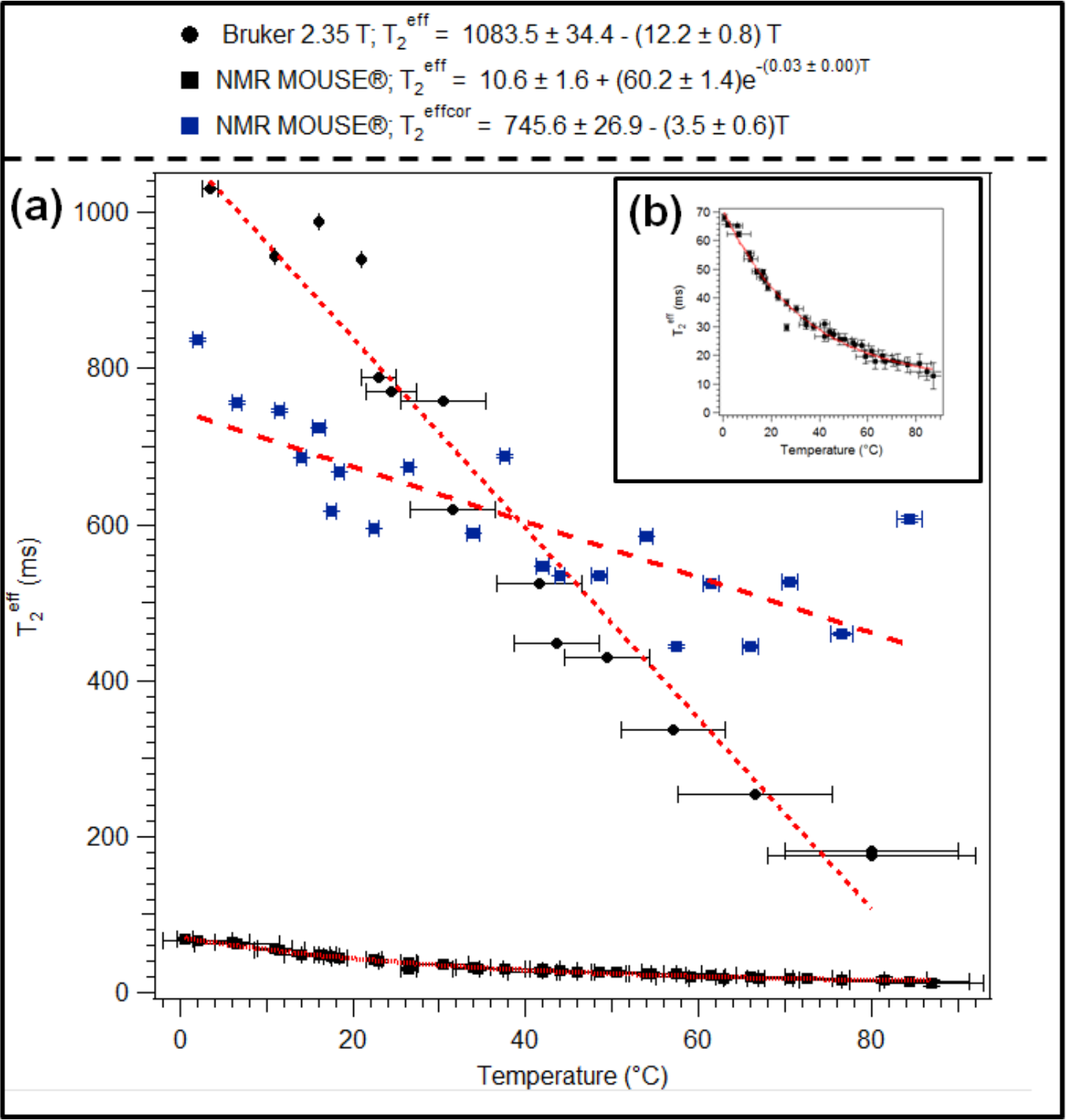Demonstration of the temperature dependence of T2eff of water performed using two different commercial nuclear magnetic resonance system
- 1. Nottingham Trent University, School of Science and Technology, Nottingham, United Kingdom
- 2. Lab Tools, Canterbury, United Kingdom
In this study we demonstrate a method to relate T2eff data from two commercial nuclear magnetic resonance systems: A horizontal bore Bruker 2.35 T small animal scanner and a 0.25 T NMR MOUSE® unilateral permanent magnet system. A simple mathematical transform is performed to the governing theoretical equations to facilitate interpretation of the data. Water samples have been used in this work as it represents a common material, which is well understood in terms of chemistry but poorly quantified in terms of T2eff temperature dependence. The temperature range selected for this series of experiments is between the freezing and boiling point of water at atmospheric pressure.
It is show that in the system with a homogeneous field gradient, such as the Bruker 2.35 T small animal scanner, the effect of temperature upon T2eff provided a linear fitting (Fig 1(a)). This would be expected in a highly homogenous field where dephasing due to the spins diffusing within the field gradient should be minimal. In contrast it was observed for a system with an extremely large field gradient, the NMR MOUSE® (Fig 1(b)), that T2eff experienced an exponential dependency upon temperature. This effect was shown to be a result of the MOUSE's® extremely large gradient in the direction of the polarizing field (B0) coupled with the thin sensitive volume, meaning that diffusion within the gradient made a significant contribution to the spin dephasing.
This work demonstrated a methodology for the collection of meaningful T2eff data in a system with a high magnetic field gradient (the NMR MOUSE®), with the effect of diffusion across this gradient leading to a an exponential variation in T2eff with temperature. It is further demonstrate how a simple mathematical treatment can be used to negate this effect and provide a technique for the modeling of T2eff as a function of temperature in other systems when the magnetic field gradient is known.

